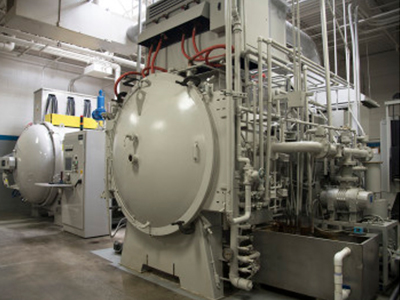Steel quality is determined by a number of factors, including its cleanliness, the homogeneity of microstructure, grain size and the size and distribution of the carbides. With a better understanding of steel quality and steel types, tablet manufacturers can compare between tooling vendors to make an informed decision about the tooling they purchase.
Selecting the steel type for your tablet compression tooling is very important and many different types of tool steels are utilised within the tableting industry, each with unique and advantageous properties. Most commonly, tablet manufacturers want to know how different steel types relate to their specific product and the benefits associated with each option. However, if you were to ask a tableting expert what type of steel should be used, the answer remains the same, "It depends."
Choosing the appropriate steel for production directly correlates with the product's formulation. How does the tooling relate to the specific product being compressed? Does the formulation require high compression forces? Is it sticky? Is it abrasive or corrosive? Steel grade composition, hardness and heat treat processing directly impact tooling quality and ultimately, the success of tablet production. Understanding how and why these components affect the steel used for your tablet compression tooling can help you make a confident decision and an investment in quality.
Steel Grade Composition
Each grade of steel is determined by its nominal chemical composition. The elements that contribute to the composition give different properties to the steel. For example, chrome steels such as M340 or 440C are beneficial for sticky products because the additional chrome content yields improved product release characteristics. While higher carbon (D2) and vanadium (PM-3V, 9V, 10V) steels yield better abrasive wear characteristics that are beneficial for products such as vitamins that are high in calcium, magnesium and zinc.
Hardness
Hardness is an example of a mechanical property that measures a material's resistance to localised plastic deformation. Hardness is important because it correlates with other mechanical properties such as tensile strength, wear resistance, yield strength and compression strength. Rockwell Hardness tests the hardness of a compound by indenting the material and determining the hardness value based on the depth of the penetration (degree of localised plastic deformation) and load. Higher Rockwell hardness tends to increase abrasion resistance but decrease impact toughness (i.e. it has lower force ratings) and lower Rockwell hardness tends to decrease abrasive wear resistance but increase impact toughness.
Heat Treating
The hardness of the steel is determined by the heat-treating process, which is a critical step in the manufacture of tooling. Even the best quality of steel can be ruined by poor heat treatment and a marginal steel made decent by good heat treatment.
Heat treating alters the mechanical properties of steel by transforming crystalline lattice structures and by modifying the arrangement and concentrations of the chemical phases within the steel. Body-centered cubic, face-centered cubic, and body-centered tetragonal are three examples of unit cells which are fundamental building blocks for the crystalline lattice structure and phases. These unit cells give rise to the carbon alloy phases of ferrite, austenite, and martensite. The concentration of each of these phases will depend on the current state of the tooling. For example, steel in the annealed, pre-hardened, state will consist predominately of ferrite. While hardened steel should consist of martensite and some retained austenite. In terms of mechanical properties, martensite is harder and stronger than ferrite and austinite. Austenite is formed during the hardening process while the tooling is held at the hardening, or Austenitizing temperature, approximately 1500°F to 2100°F.

Natoli’s in-house heat treating vacuum electric furnaces ensure batch consistency, optimum quality control, and maximum tool life
The hardening temperature sometimes referred to as high heat is dependent on steel type, and caution must be taken to ensure that the appropriate hardening temperature and holding time are implemented in order to prevent excessive grain growth. Excessive grain growth may lead to detrimental mechanical traits. The holding or soak period at high heat is immediately followed by the quench. The quench cools the part by subjecting it to a quenching media such as inert Nitrogen gas. The cooling rate will influence the concentration levels of the different phases.
Tempering is the final heat treat process which can also facilitate phase transformation for certain steel types. More importantly though, tempering will relieve the internal stresses created by the hardening process. The final hardness may be further tailored to suit application-specific requirements during this final heat treat stage. Note that the overall mechanical properties of the tooling will be dictated by not only the hardness, but also by the concentration and arrangement of the different phases within the steel. Heat treating affects the mechanical properties of the steel and ultimately the performance of the tooling.
Tablet compression tooling vendors should provide a steel's true classification information to help their customers make the best selection. While some tooling vendors may only offer four to five different steel grades, the best tooling vendors offer a variety of tool steels so that the optimal steel can be selected. High-performance tooling is a direct result of high-performance steel.





